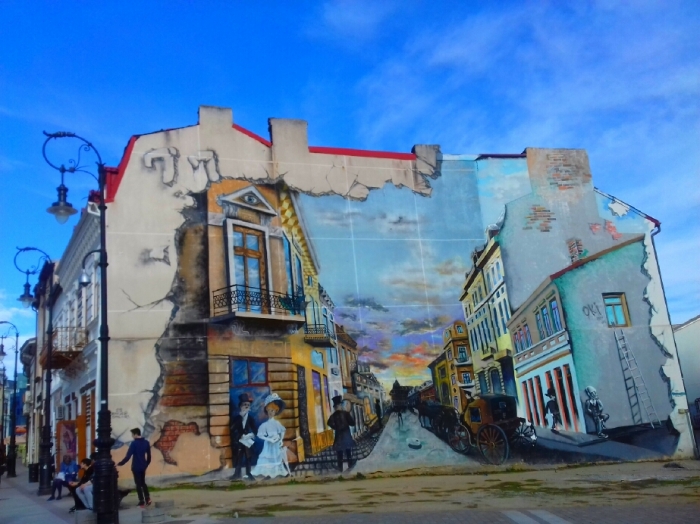A city break to Craiova, the 6th largest city of Romania may take you by surprise because this place has a lot to offer.
The name of the city founded on the site of the Dacian stronghold Pelendava has two possible ethymologies, both of them of Slavonic origin. The name derives either from the word Kral ( king) or Krajina ( border,edge).
2 or 3 days will be enough to give you a clear taste of this city. It is a city where you feel comfortable because it has a lot to show. What is impressive is that ,despite the earthquake of 1790, the plague of 1795 and a Turkish assault in 1802, when Craiova was burnt, the city is still live and beautiful.
The historic center has some interesting building, churches, statues and a lot of pedestrian space. Which is great! What I alos liked were the drawings on the old and ugly buildings of the city.
Alexandru Buia Botanical Garden is also a place where you can enjoy a nice morning afternoon.


The city prides itself on the strong academic tradition and wealth of important historical figures who passed through here on their journey to fame: Wallachian Prince Mihai Viteazu – who served as the ban of Craiova and achieved the first unification of the 3 Romanian principalities in 1600, the world-famous sculptor Constantin Brancusi – who studied at the Craiova Art School between 1894 – 1898 and carved his first sculptures here, and Petrache Poenary, inventor of the first cartridge fountain pen.
The Art Museum, a great building of 1896 has got 6 early sculptures of Brancusi.The Museum also exhibits valuable masterpieces created by famous Romanian painters, among them Theodor Aman and Nicolae Grigorescu .The neobaroque palace that houses the museum was completed in 1896, following the plans of the French architect Paul Gotereau, who also built the CEC building in Bucharest.
Craiova also has a number of churches, the oldest being the Cosuna Monastery (1483).You can spend a relaxing afternoon visiting the monastery, located only 2.1 miles outside of the city centre.
Another religious site, Madona Dudu Church, is renowned for its mural paintings, completed by the famous Romanian painter Gheorghe Tattarescu .
Oltenia Museum, housed in Baniei House (1699), the oldest non-religious building that exists in Craiova and one of the oldest lay buildings in the country. Here you find an ethnography museum of great value.
You can learn anything and everything about the history of the region, starting with the prehistoric times. It presents the traditional trades and occupations of peasants in Oltenia, starting with hunting, fishing or gathering and ending with raising cattle, working the fields, harvesting the crops, emphasizing the continuity of the locals. The museum exhibits wooden carvings and ceramics, a large collection of jars, bowls of all kinds, plates, carpets in the style and manner used in Oltenia.
You can also see the history museum ( located in another building) and the natural science museum.
Over 90 hectares makes the 111 year old Parcul Nicolae Romanescu one of the largest urban parks in Eastern Europe. The name of the park was Bibescu in the past.
At the end of the 17th century and the beginning of the 18th century, Craiova’s architecture underwent a transformation with the creation of the Brancovenesti style, a combination of Romanian traditional art, Byzantine and Venetian elements. This style can still be seen today at some of the churches in the city.



Marin Sorescu, Romanian writer

Art Museum




























